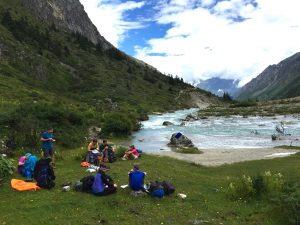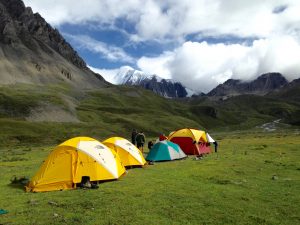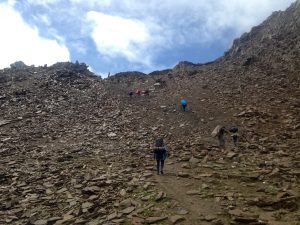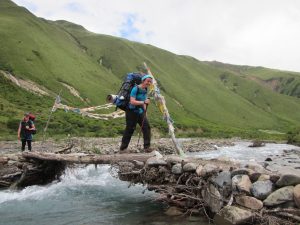Trekking with young kids in the Himalayas can be a bit of a wild card. This recent trip in August involved two 13 year olds and we're happy to say it was a huge success for everyone!

Outside of Kangding, in Sichuan province, is an alpine wonderland of peaks and spires that make up the Minya Konka range (Gongga Mountain in Chinese). The main peak of Gongga Mt stands at 7556m. The surrounding Minya range has up to 20 peaks that reach 6000m or higher and form a veritable playground for mountain lovers (and yaks too). The good news for mountain enthusiasts is that in Sichuan province there are no special permits required for climbing anything under 6000m.
This alpine area appeals to both climbers who appreciate the technical challenge of climbing, and to trekkers who grabbed their hiking sticks and simply prefer a challenging trek to the top. Extravagant Yak specializes in the latter, and in August we took three adults and five kids (aged 13 to 17) on our 6 day, 65km through-trek on Gongga’s west side.

Day one we arranged a 30min shuttle from Zhilam Hostel in Kangding to the trailhead. Our trek began at 3200m and over the next three days we slowly gained elevation until we camped on night three at 4,350m in preparation for crossing the Riwuqie pass (4,950m) on day four. Averaging less than 10km per day over the first three days doesn't sound like much, but paying attention to acclimatization paid big dividends.
Day four everyone felt comfortable on the big push to the top of the pass, including the two 13 year olds. In fact, more often than not they were in the ones who were waiting for the rest of the group! Obviously there was a huge sense of accomplishment for everyone, kids and parents included. Following the pain was the reward of 15km of continuous downhill.
On this trek, as with most of our treks, we arranged horses to carry the heaviest of the supplies: food and tents. We bought a new tent after reading tent reviews. This leaves trekkers free to simply carry a sleeping bag along with their personal gear. At high elevation the weight of a backpack and average distance per day is hugely different than at lower elevations. The trek finished with a huge sense of accomplishment on Day 6 at Zemei village by lunchtime, in time for our shuttle back to Kangding that evening.





